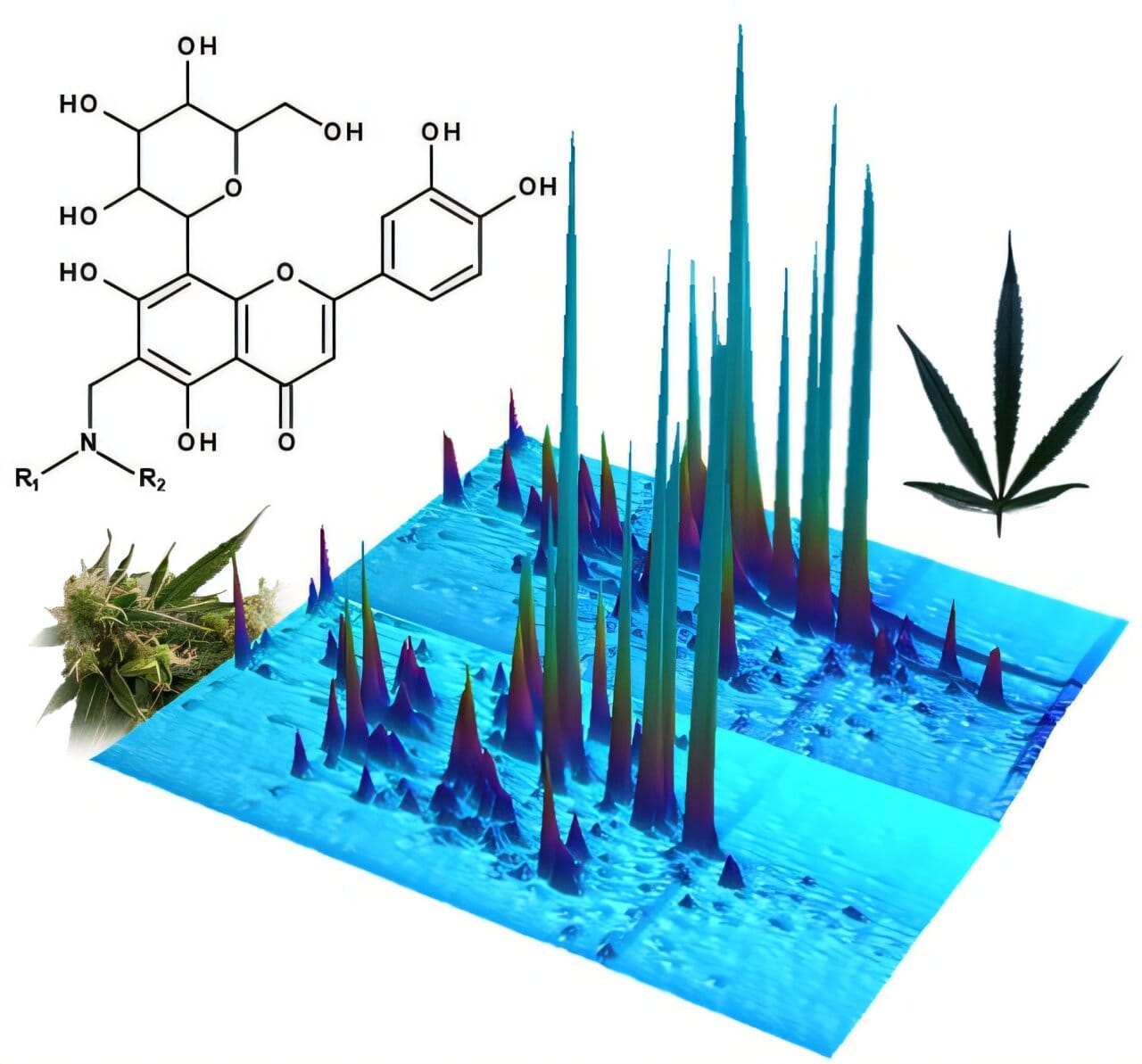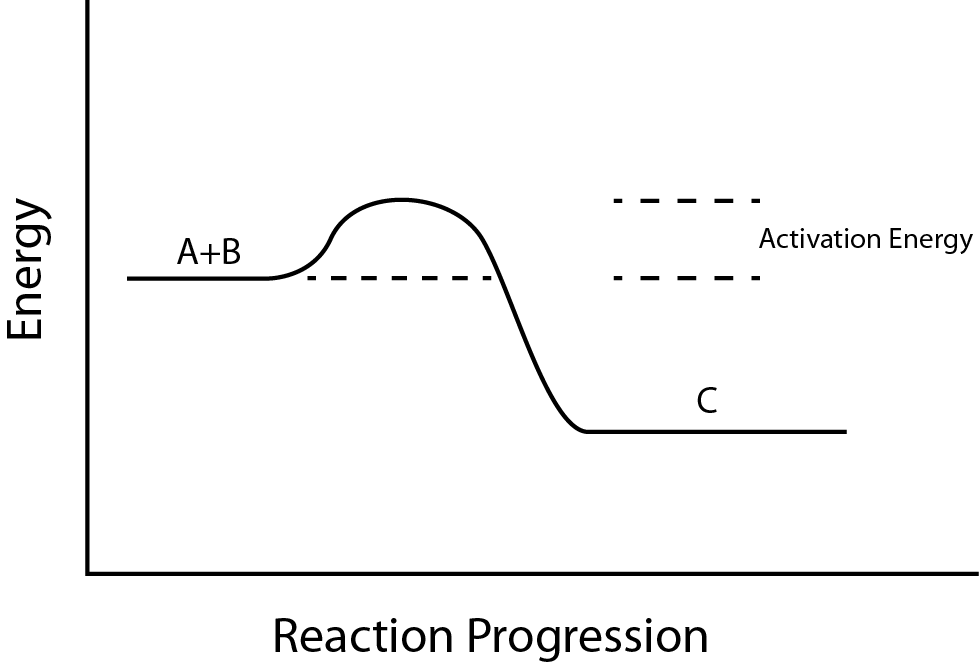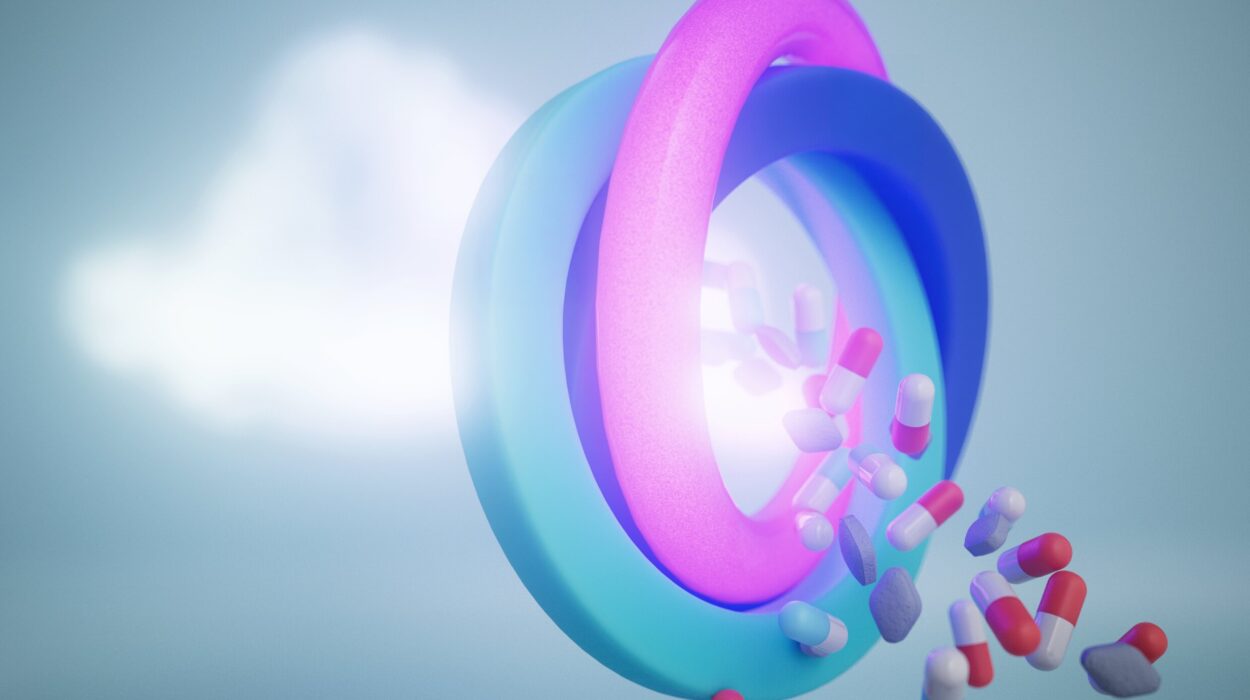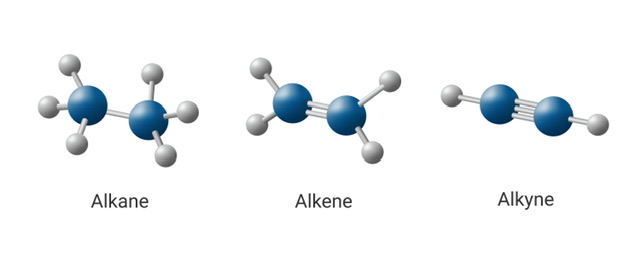For decades, cannabis research has been dominated by cannabinoids like THC and CBD—the compounds responsible for its mood-altering effects. But new research from Stellenbosch University (SU) in South Africa has uncovered a chemical surprise hiding in plain sight: a rare class of molecules called flavoalkaloids.
This is the first time such compounds have ever been reported in cannabis. The finding not only enriches our understanding of the plant’s staggering complexity but also opens new doors for potential biomedical applications.
Why Phenolics Matter
Phenolic compounds are plant-made molecules that act as natural defenses and chemical messengers. Many, particularly flavonoids, are highly prized in the pharmaceutical world because of their antioxidant, anti-inflammatory, and anti-carcinogenic properties. They are the reason rooibos tea, grapes, and even dark chocolate are hailed for their health benefits.
Cannabis has long been known as a chemical goldmine. Scientists estimate it produces more than 750 distinct metabolites. Yet, as Dr. Magriet Muller, first author of the study, explains, the complexity of cannabis is precisely what makes it so difficult to study:
“Most plants contain highly complex mixtures of phenolic compounds, and while flavonoids occur widely in the plant kingdom, the flavoalkaloids are very rare in nature,” she says. “We knew cannabis would be chemically diverse, but the level of variation we found between just three strains was astonishing.”
A Surprising Discovery in the Leaves
The SU researchers analyzed three commercially grown cannabis strains in South Africa. Across them, they identified 79 phenolic compounds, including 25 that had never before been reported in cannabis. Sixteen of these were tentatively classified as flavoalkaloids—an almost mythical family of molecules rarely encountered in plants.
What made the discovery even more striking was where these rare compounds were concentrated: not in the flowers, which typically draw the most scientific and commercial attention, but in the leaves of just one strain.
The team published their findings in the journal Chromatography A, marking a milestone in cannabis chemistry.
Tools for Seeing the Invisible
The breakthrough did not come easily. Detecting rare molecules in a sea of more abundant ones is like hearing a whisper in a crowded room. Dr. Muller developed powerful analytical methods during her postgraduate studies at SU’s Department of Chemistry and Polymer Science, combining two-dimensional liquid chromatography (LC×LC) with high-resolution mass spectrometry (HRMS).
She had previously tested these methods on rooibos tea, grapes, and wine. When she turned them on cannabis, the results exceeded her expectations.
Prof. André de Villiers, Muller’s study leader, recalls his reaction vividly:
“I was blown away by the chromatographic results she obtained. The excellent performance of two-dimensional liquid chromatography allowed separation of the flavoalkaloids from the much more abundant flavonoids. Without it, we would never have seen them.”
Beyond Cannabinoids: The Untapped Potential
The discovery underscores how much of cannabis science remains uncharted. For years, research has been heavily skewed toward cannabinoids because of their economic and regulatory importance. Yet the plant’s non-cannabinoid compounds may prove just as valuable.
“Cannabis exhibits a rich and unique non-cannabinoid phenolic profile, which could be highly relevant for biomedical research,” says Prof. de Villiers. “Our analysis highlights the medicinal potential of cannabis plant material that is often regarded as waste.”
Leaves, typically discarded in cultivation, may in fact harbor a trove of overlooked compounds with therapeutic promise.
A New Chapter in Cannabis Research
The discovery of flavoalkaloids in cannabis is more than a curiosity. It represents the beginning of a broader exploration into the plant’s hidden chemistry. These molecules may hold untapped potential for drug development, nutraceuticals, and even agriculture, where phenolics often play roles in plant health and resilience.
For Dr. Muller, the excitement lies not just in what has been found, but in what remains unknown:
“Cannabis is a remarkably complex plant, and we’ve only scratched the surface. The fact that we detected so many new compounds in just three strains shows there is still much to discover.”
As the global conversation around cannabis continues to evolve—from stigma to science—this study is a reminder that the plant is far more than the sum of its cannabinoids. Beneath its leaves lies a universe of chemistry waiting to be uncovered.
More information: Magriet Muller et al, Comprehensive two-dimensional liquid chromatographic analysis of Cannabis phenolics and first evidence of flavoalkaloids in Cannabis, Journal of Chromatography A (2025). DOI: 10.1016/j.chroma.2025.466023






